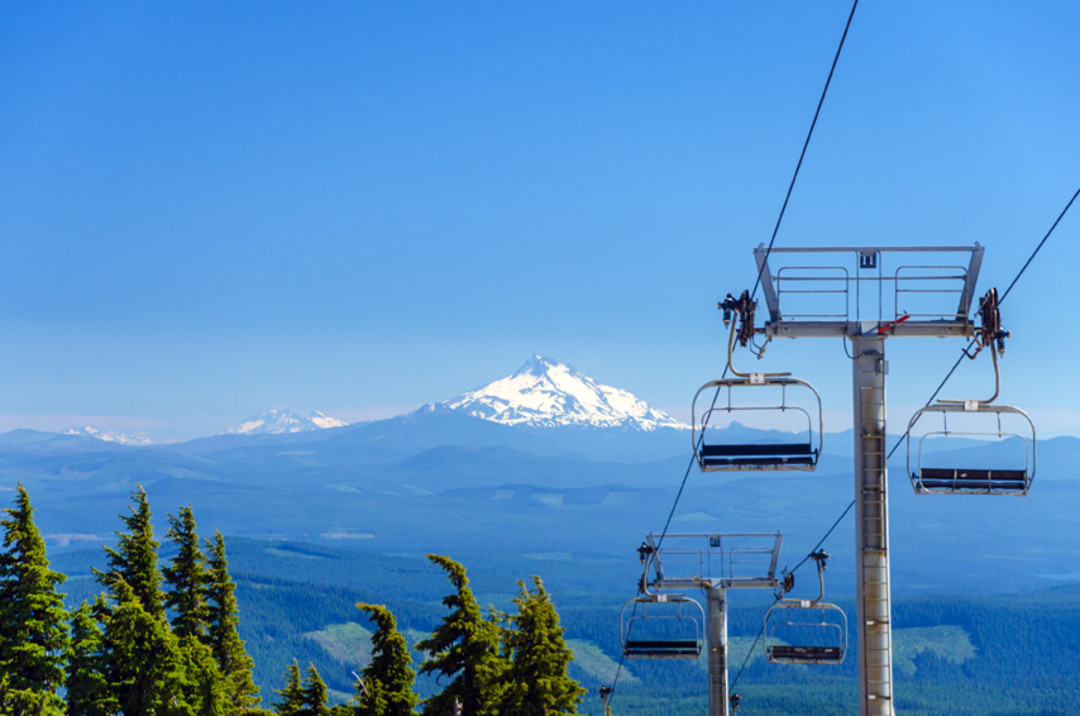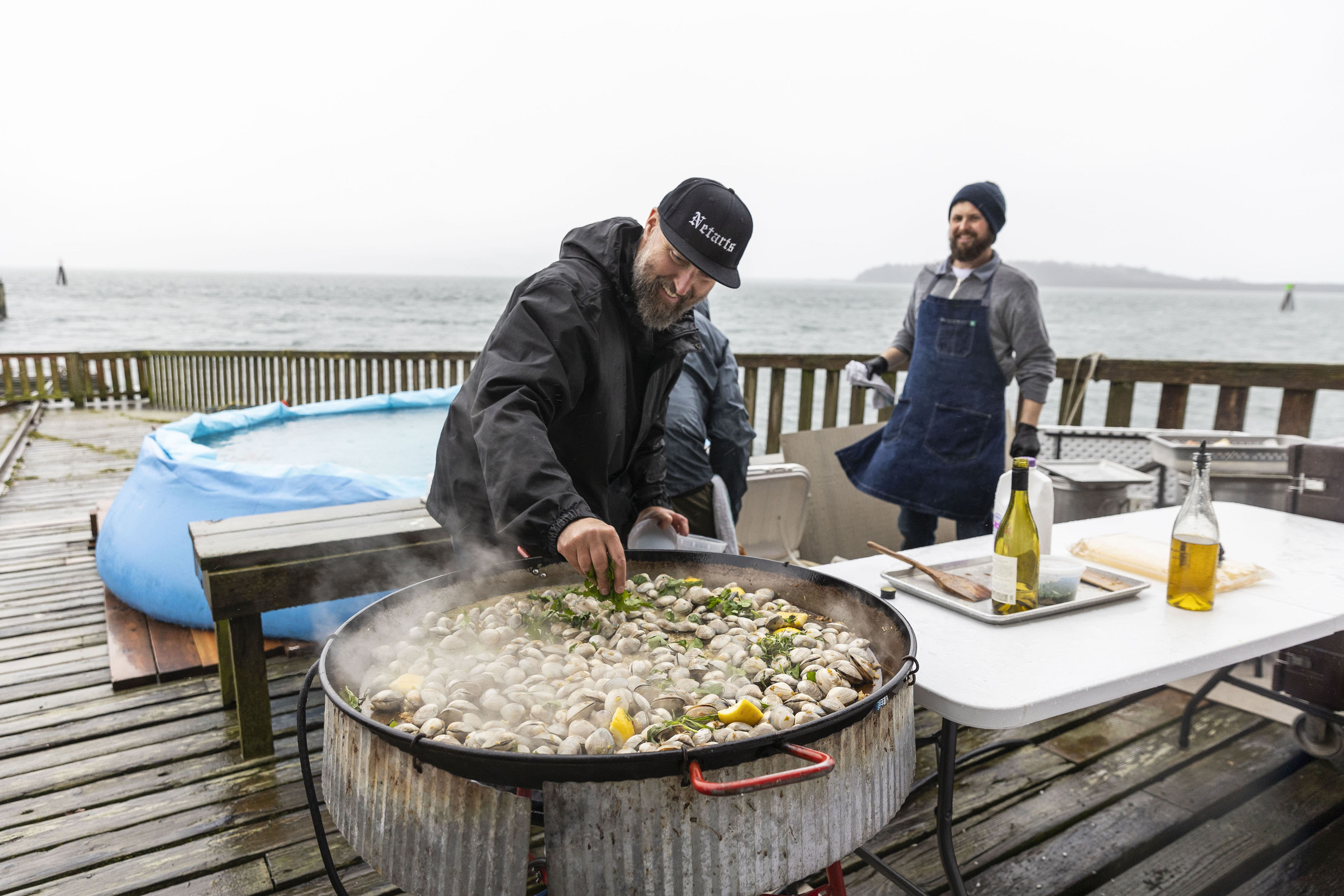Summer Skiing at Timberline

Silence hangs over the car as we slide around the south side of Mount Hood on Highway 26. On our right stands the outcropping known as “silent rock.” Maybe it was named that way to honor the victims of a car crash in the '80s, maybe for Native Americans killed by pioneers. Either way, if we speak or play the radio while passing it, injury might well come on the slopes.
So goes the legend among skiers and boarders who frequent Mount Hood. They preserve other, lighter traditions as well. In Sandy, every outdoor adventurer stops at Joe’s Doughnuts to fuel up before hitting the mountain. In 1974, Joe opened the shop straight out of high school. Now, the red-and-white checkerboard storefront promises maple bacon and buttermilk bars for a wholesome mountain breakfast.
After winding through Mount Hood National Forest and climbing Timberline Highway, we reach the only ski area in the United States open 12 months a year. The mountain's peak looms close enough to invite fantasies of summiting. In Timberline's rental shop, gear specialists equip skiers with boots, poles, and a pair of freshly waxed Rossignols in minutes. The lifts are a five-minute walk from the lodge.
In the lines for the Magic Mile and Palmer chairs, laid-back lifties keep spirits running high. “I believe that we will win,” chants the Palmer operator (and World Cup enthusiast) as he waves crowds into the snowshed. Park skiers with baggy burton pants, bright orange bindings, and Dakine backpacks banter with racers in speed suits.
The Palmer lift sweeps up the glacier under the topmost crags of Hood. Mount Jefferson and the Three Sisters preside over Trillium Lake, sunk within forest ridges spread across the horizon like lines on crumpled paper. Skiers traverse a wide-open snowfield or drop straight down one of two groomers. In the morning, the snow proves firm and fast, softening in the afternoon for leisurely turns. Below, off Magic Mile, we pass by hikers on quick and sunny runs to the base. Despite the beach-like atmosphere, the snow at the higher elevations holds up to fast skiing, even as late as 1:00 p.m.
That’s partly because this veneer of a mountain town running at full tilt in summer hides a troubling environmental practice. The first hints came on a ride up Magic Mile. A patroller’s radio crackled. A voice on the other end described breaking into teams to dump buckets of salt of the slopes.
Each summer, Timberline pours nearly a million pounds of salt onto the fragile Palmer Glacier. The resort calls its terrain the “Palmer Snowfield” to avoid angering activists. It’s still a glacier, and while chloride levels haven’t yet met the chronic toxicity threshold, conservation groups warn of serious damage—the practice could ultimately poison soil, alpine vegetation, and the Salmon River.
It’s a tension that won’t soon resolve. Two heart-stopping views down a sunny slope. Two reasons to demand a moment of silence.




